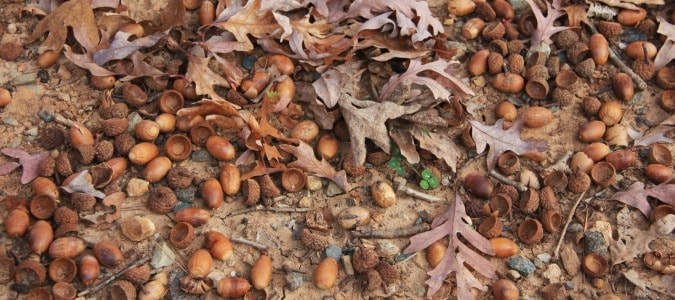Tips and Tricks for Planting a Tree This Fall
Fall is one of our favorite times of the year. Between sipping apple cider, snacking on pumpkin muffins, and preemptively planning for this year’s Thanksgiving Dinner, there are just so many activities we look forward to.
And though you might be more interested in carving pumpkins or watching football, you might want to consider planting a few new trees around your home. Did you know that fall is the perfect time of year to plant new trees in Austin?
Below are a few of our tree planting tips.
Selecting Your Tree
Properly planting a new tree starts with your selection. The first step to choosing the right tree is deciding its purpose. For example, will it provide privacy or is it simply for aesthetics? Deciding how your tree will enhance your home will help you decide which tree you should look for.
What type of tree would work best for your property? Consider selecting a native tree which will be more well-suited to our soils and climate. A few examples of trees you could consider are pecan trees, Desert Willow, Texas ash, Mexican buckeye, and bur oaks.
Once you’ve decided on the type of tree you want, it’s important to know the difference between purchasing a new tree or one that’s matured. New trees can be bare rooted, balled and burlapped, or container-grown; each with different root characteristics. While bare root trees’ roots are moist and fibrous, roots of a balled and burlapped tree are firm to the touch.
When purchasing a mature tree, look for those with a fairly large trunk diameter and bright, healthy bark.
Choosing the Right Location
The next step to successfully planting a new tree is finding the right location for it to grow. When selecting its new location, we suggest staying at least 15 feet away from the house, sidewalk, driveway, and other trees.
You’ll also want to look out for anything the tree might grow into—like overhead power lines. If you selected a shade tree, this is especially important, as most trees of this kind grow to at least the same height as power lines.
Digging a Hole
A wide planting hole is essential for fast, healthy tree growth. Keep in mind the depth of the hole shouldn’t be more than the height of the root ball of the tree and two to three times as wide.
Use a pointed shovel to dig the hole and be sure to remove any grass or weeds. Next, prepare your soil by breaking it up so it’s loose and placing it around the hole.
Placing the Tree
Placing the tree is an important step in the tree planting process, so be sure to either roll or carefully carry the tree into the hole. Be sure to carry it by the root ball, not its trunk. Find the tree’s best side and position it towards the most prominent direction.
Once situated, remove the root ball from its container. With your hands, loosen the packed soil to uncover the plant’s tiny roots.
Backfilling the Hole
To stabilize the tree, pack soil around the base around the root ball. Any additional space should be firmly packed to eliminate air pockets. At this time, mix fertilizer into your soil pile and begin shoveling it into the hole.
The final step is watering your newly planted tree. For optimal growth, be sure to water your tree every day for the first six weeks. Keep in mind, though, that your watering schedule will change as the tree continues to grow.
Calling for Backup
Planting a new tree can be a fun fall activity for you and family. But, it can also cause quite the headache.
For stress-free and expert tree planting and care, you can rely upon our team at ABC Home & Commercial Services. We have a professionally trained team that can provide full range services to you. From planting a new tree to offering the fertilization care your trees need, our team can help.
With decades of experience in lawn care, ABC Home & Commercial is the right choice for your home.
